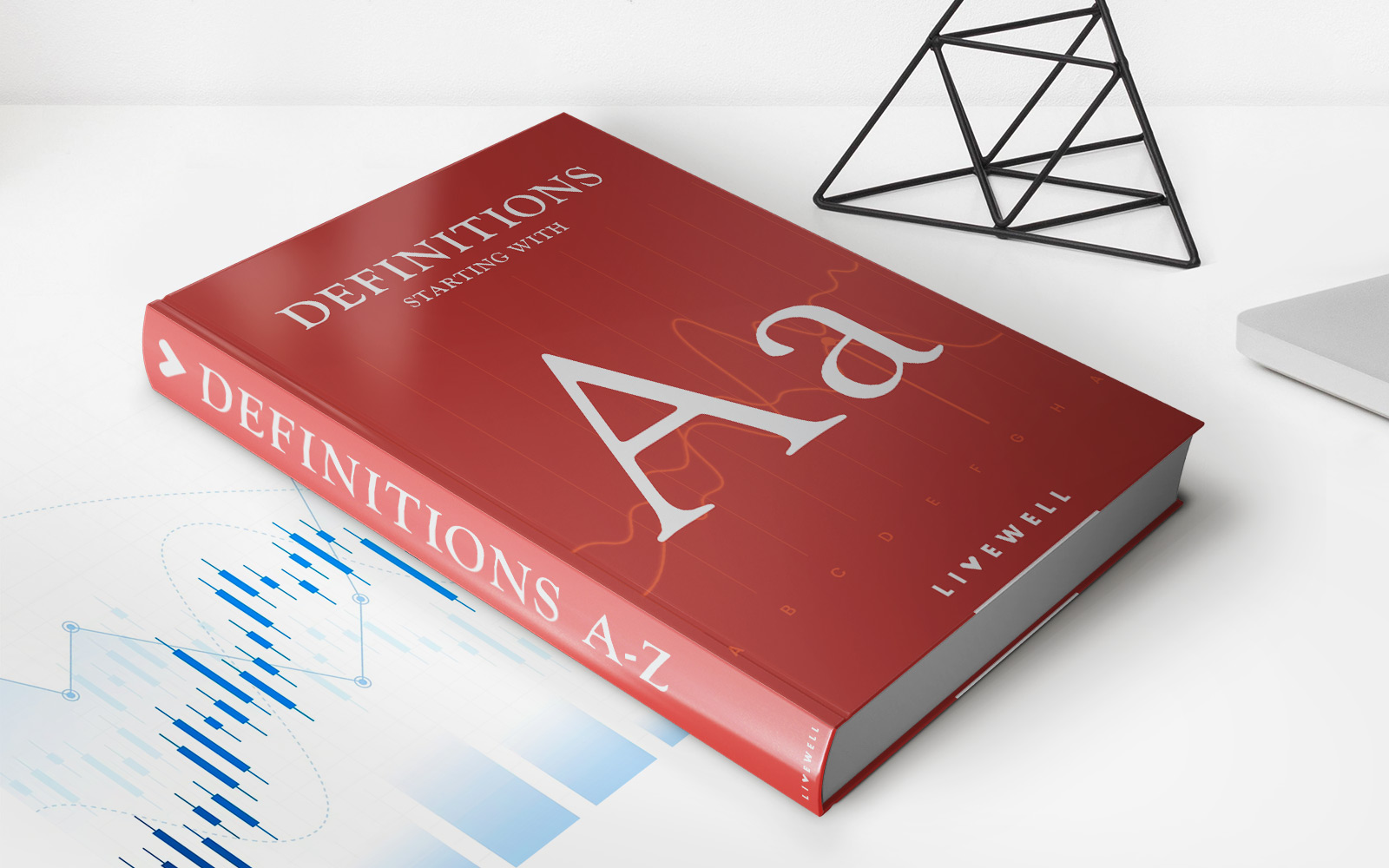

Finance
How Much Is The Average NYPD Pension
Published: November 27, 2023
Discover the average NYPD pension and what it means for your finances. Gain insights on retirement planning and how to maximize your financial future.
(Many of the links in this article redirect to a specific reviewed product. Your purchase of these products through affiliate links helps to generate commission for LiveWell, at no extra cost. Learn more)
Table of Contents
- Introduction
- Understanding the NYPD Pension System
- Factors Influencing the Average NYPD Pension
- Calculation Methodology
- Average NYPD Pension by Rank
- Comparison with Other Public Pensions
- Impact of Length of Service on NYPD Pensions
- Role of Salary in Determining NYPD Pensions
- Retirement Age and its Effect on NYPD Pensions
- Potential Reforms and Future Outlook
- Conclusion
Introduction
The New York City Police Department (NYPD) is renowned for its dedicated officers who work tirelessly to protect and serve the community. In recognition of their service, the NYPD offers a comprehensive pension system that ensures financial security for its retired officers.
Understanding the intricacies of the NYPD pension system is vital for both current officers planning for their future and individuals interested in the financial aspects of a career in law enforcement. In this article, we will delve into the factors that influence the average NYPD pension and shed light on how pensions are calculated.
With the rising costs of living and uncertainties in economic conditions, having a solid pension plan becomes increasingly important for retirees. The NYPD pension provides officers with a steady income stream during their retirement years, allowing them to maintain their standard of living and support themselves and their families.
It is essential to note that the NYPD pension system varies based on rank, length of service, and other factors. These variations lead to different pension amounts for different officers. By examining these factors and understanding the calculation methodology, we can paint a clearer picture of the average NYPD pension and the factors that influence it.
Moreover, comparing the NYPD pension with other public pensions will provide a broader perspective on the benefits offered to retired officers. We will also explore the impact of length of service, salary, retirement age, and potential reforms that may affect the average NYPD pension.
In this article, we aim to provide a comprehensive overview of the average NYPD pension, empowering readers with valuable insights into retirement planning for law enforcement professionals. Let’s dive into the details of the NYPD pension system and explore the factors that shape the average pension received by retired NYPD officers.
Understanding the NYPD Pension System
The NYPD pension system is a defined benefit plan that provides retired officers with a guaranteed income based on a specific formula. This means that the amount of pension received is predetermined and not subject to market fluctuations or investment returns. It offers security and stability to retired officers, allowing them to plan their finances with confidence.
One key aspect of the NYPD pension system is its tiered structure. The pension benefits are divided into different tiers, each with its own set of rules and requirements. The tier in which an officer falls depends on their date of appointment, with newer officers falling into higher tiers.
The pension is calculated based on a formula that takes into account various factors, including an officer’s salary and length of service. Officers contribute a percentage of their salary to the pension fund throughout their careers, and these contributions, along with employer contributions, fund the pension benefits.
Upon retirement, officers receive a monthly pension payout based on their final average salary, which is determined by averaging their highest consecutive three or five years of salary, depending on their tier. The percentage of the final average salary that makes up the pension income varies based on the years of service and tier.
The NYPD pension system also offers additional benefits, such as health coverage, survivor benefits, and cost-of-living adjustments. These benefits help retired officers maintain their quality of life and provide support for their families even after they have completed their service.
It is important to note that the NYPD pension system is subject to periodic reviews and potential reforms. These changes can impact the calculation methodology and the benefits received by retired officers. Staying informed about these updates is crucial for both current officers and retirees to understand how their pension may be affected.
By comprehending the structure and functioning of the NYPD pension system, officers can make informed decisions about their careers and retirement planning. Understanding the various factors that influence the average NYPD pension is essential for officers to assess their financial future and make strategic choices throughout their service.
Factors Influencing the Average NYPD Pension
The average NYPD pension is influenced by several key factors that determine the final payout for retired officers. Understanding these factors is crucial for officers to plan for their retirement and estimate the amount they can expect to receive. Let’s explore the main factors that shape the average NYPD pension:
- Length of Service: The length of an officer’s service plays a significant role in determining the pension amount. Generally, the longer an officer serves in the NYPD, the higher their pension will be. This is because a longer career allows for more contributions to the pension fund, resulting in a larger accumulated balance and higher monthly benefits.
- Final Average Salary: The final average salary is another key factor in calculating the NYPD pension. It is determined by averaging the officer’s highest consecutive three or five years of salary, depending on their tier. A higher final average salary leads to a higher pension amount, as the pension is typically calculated as a percentage of this average.
- Tier: The NYPD pension system is divided into tiers based on the officer’s date of appointment. Each tier has its own set of rules and requirements. The tier in which an officer falls plays a role in determining the pension calculation formula and retirement age eligibility. Generally, newer tiers have different benefit structures than older ones, potentially affecting the final pension amount.
- Contributions: Officers contribute a percentage of their salary to the pension fund throughout their career. The amount of these contributions can impact the final pension amount, as higher contributions result in a larger accumulated balance. It is important to note that the percentage of contributions may vary based on the officer’s tier.
- Survivor Benefit Options: The NYPD pension system offers various survivor benefit options to provide financial support to the officer’s spouse or designated beneficiary in the event of the officer’s death. These survivor benefit choices can affect the officer’s pension amount during their lifetime, as a higher survivor benefit option may result in a slightly reduced monthly pension.
Combining these factors, the average NYPD pension reflects the unique circumstances and career path of each individual officer. While it is challenging to provide an exact figure for the average pension amount due to the variability of these factors, understanding the influence of length of service, final average salary, tier, contributions, and survivor benefit choices provides officers with valuable insights into their potential retirement income.
Calculation Methodology
The calculation of the NYPD pension follows a specific methodology that takes into account various factors to determine the final pension amount. While the precise formula may vary based on an officer’s tier and date of appointment, the general principles remain consistent. Here’s an overview of the calculation methodology for the NYPD pension:
- Final Average Salary Calculation: The first step in calculating the pension is determining the officer’s final average salary. This is done by averaging the officer’s highest consecutive three or five years of salary, depending on their tier. The final average salary represents the basis for the pension calculation.
- Pension Service Fraction: Next, a percentage known as the Pension Service Fraction is applied to the final average salary. The Pension Service Fraction is determined based on the officer’s length of service and tier. It typically ranges from 2% to 3.5% per year of service.
- Service Retirement Benefit Calculation: To calculate the service retirement benefit, the Pension Service Fraction is multiplied by the officer’s years of service and then by the final average salary. The result is the annual pension benefit that the officer is eligible to receive upon retirement.
- Survivor Benefit Deductions: If the officer chooses to provide survivor benefits to a spouse or designated beneficiary, deductions are made from the service retirement benefit. These deductions account for the cost of providing survivor benefits and slightly reduce the officer’s monthly pension amount during their lifetime.
- Cost-of-Living Adjustments: The NYPD pension system includes cost-of-living adjustments (COLAs) to help retirees keep up with inflation. COLAs are percentage increases applied to the pension benefit to account for the rising cost of living. The exact COLA percentages may vary based on legislation and economic conditions.
It is important to note that each tier within the NYPD pension system may have slight variations in the calculation methodology, including the contributions made by officers and the retirement age eligibility. Officers should refer to the specific provisions of their tier to accurately estimate their potential pension benefits.
By understanding the calculation methodology, officers can have a clearer understanding of how their pension is determined and the factors that impact the final pension amount. This knowledge is invaluable for retirement planning, allowing officers to make informed decisions about their finances and ensure a secure future after their service in the NYPD.
Average NYPD Pension by Rank
The average NYPD pension varies by rank, with higher-ranking officers typically receiving higher pension amounts. This is due to factors such as longer service, higher salaries, and different benefit calculations. Let’s explore the average NYPD pension amounts by rank:
- Police Officer: As the entry-level rank in the NYPD, police officers typically have the shortest service duration and lower salaries compared to higher-ranking officers. The average pension for a retired police officer can range from around $30,000 to $40,000 per year.
- Sergeant: Sergeants usually have more years of service and higher salaries than police officers, which translates to higher pension amounts. The average pension for retired sergeants can range from approximately $40,000 to $55,000 per year.
- Lieutenant: Lieutenants hold a higher rank and have longer service durations and higher salaries, leading to increased pension amounts. The average pension for retired lieutenants can range from around $55,000 to $70,000 per year.
- Captain: Captains, being higher-ranking officers, have even longer service durations and higher salaries than lieutenants. Consequently, the average pension for retired captains can range from approximately $70,000 to $85,000 per year.
- Deputy Inspector: Deputy inspectors, with their higher ranks and longer careers, receive larger pension benefits. The average pension for retired deputy inspectors can range from around $85,000 to $100,000 per year.
- Inspector: Inspectors, as senior officers, have extensive service durations and higher salaries. Retired inspectors can expect average pension amounts ranging from approximately $100,000 to $115,000 per year.
- Chief: Chiefs, holding the highest-ranking positions in the NYPD, have the longest service durations and the highest salaries. The average pension for retired chiefs can exceed $115,000 per year.
It is important to note that these average pension amounts are approximate and can vary based on several factors, including length of service, tier, final average salary, and individual circumstances. Higher-ranking officers generally have more substantial pensions due to their longer careers and higher salaries.
Understanding the average pension amounts by rank provides officers with insight into the potential retirement benefits they can anticipate based on their career progression within the NYPD. It allows them to plan for their financial future and make informed decisions regarding their retirement savings and investments.
Comparison with Other Public Pensions
When examining the average NYPD pension, it is insightful to compare it with other public pensions to gain a broader understanding of the benefits provided to retired officers. While the specific details of public pensions may vary from state to state, here is a general comparison:
Teacher’s Retirement System (TRS): The TRS is a prominent public pension system for educators. On average, retired teachers receive pensions that range from approximately $30,000 to $50,000 per year, depending on their years of service and final average salary. Comparatively, the average NYPD pension tends to be higher due to factors such as longer service and potentially higher salaries.
Fire Department Pension Systems: Similar to the NYPD, fire departments across the country have their pension systems. The average pension for retired firefighters can range from around $40,000 to $60,000 per year, depending on factors such as rank, service duration, and final average salary. While the average NYPD pension may be slightly higher, the differences are not significant.
State and Municipal Employees: State and municipal employees, such as administrative staff and public works personnel, also have their pension systems. The average pensions for these employees often range from $20,000 to $40,000 per year, with variations based on factors such as job classification, years of service, and salary levels. As with other public pensions, the average NYPD pension tends to be higher, primarily due to the nature of law enforcement work and potentially higher salaries.
It is essential to remember that these comparisons provide a general overview, and there may be variations within each pension system. Different factors, such as eligibility requirements, contribution rates, and benefit formulas, impact the final pension amounts in each system.
Additionally, economic conditions, pension reforms, and legislative changes can influence the average pension amounts across public pensions. It is crucial for officers to stay informed about potential reforms and adjustments that may affect their pension benefits in the future.
Comparing the average NYPD pension with other public pensions helps officers evaluate the value of their retirement benefits within the context of their chosen profession. It highlights the potential advantages and rewards of a career in law enforcement and provides a broader perspective on the financial security provided by the NYPD pension system.
Impact of Length of Service on NYPD Pensions
The length of service plays a significant role in determining the average NYPD pension for retired officers. The longer an officer serves in the NYPD, the more substantial their pension benefits tend to be. Here are the key impacts of length of service on NYPD pensions:
Accumulated Contributions: Officers contribute a percentage of their salary to the pension fund throughout their careers. The longer an officer serves, the more contributions they make, resulting in a larger accumulated balance in the pension fund. This accumulated balance directly impacts the pension benefit received upon retirement.
Pension Service Fraction: The pension service fraction, which represents the percentage applied to an officer’s final average salary, is determined by their tier and length of service. It typically ranges from 2% to 3.5% per year of service. Therefore, officers with longer service durations receive a higher pension service fraction, leading to a larger percentage of their final average salary as their pension.
Pension Calculation: When calculating the pension, the years of service are multiplied by the pension service fraction and the final average salary. As a result, each additional year of service contributes to an incremental increase in the pension benefit. Officers who serve for an extended period will see a more significant impact on their pension due to this calculation methodology.
Retirement Eligibility: The length of service also determines when an officer becomes eligible for retirement and can start receiving their pension benefits. Different tiers within the NYPD pension system have specific requirements for retirement eligibility based on years of service and age. Serving for a longer duration increases the likelihood that an officer will become eligible for retirement and start receiving their pension at an earlier age.
Pension Increases: Length of service is a factor considered in determining potential pension increases. Some pension systems offer additional benefits for officers who serve beyond a certain threshold, such as cost-of-living adjustments or higher pension service fractions. These additional benefits can further enhance the pension for officers with more extended service durations.
Overall, the length of service has a significant impact on the average NYPD pension. Officers who dedicate more years to the NYPD and reach higher levels of service can expect to receive more substantial pension benefits due to their accumulated contributions, the pension service fraction, and the pension calculation formula. Understanding and accounting for the influence of length of service is vital for officers to plan for their financial future and make informed decisions about their careers and retirement planning.
Role of Salary in Determining NYPD Pensions
The role of salary in determining NYPD pensions cannot be overstated. An officer’s salary throughout their career significantly impacts the average pension they can expect to receive upon retirement. Here are the key aspects of the salary’s role in determining NYPD pensions:
Final Average Salary: The final average salary is a crucial factor in calculating the pension. It is determined by averaging an officer’s highest consecutive three or five years of salary, depending on their tier. The final average salary represents the basis for the pension calculation, so a higher salary during these key years will result in a higher pension amount.
Pension Calculation: The pension calculation formula multiplies the final average salary by the pension service fraction and years of service. A higher salary directly increases the pension benefit amount, as it serves as the multiplier in the calculation. Therefore, officers who earn higher salaries throughout their career will see a larger impact on their pension benefits.
Contributions: Officers contribute a percentage of their salary to the pension fund throughout their careers. The amount of these contributions directly affects the accumulated balance in the pension fund. A higher salary results in higher contribution amounts, leading to a larger accumulated balance and potentially increased pension benefits upon retirement.
Pension Increases: Some pensions offer potential increases based on an officer’s salary progression. The final average salary used in the calculation is typically adjusted for inflation or salary growth over the years of service. Therefore, officers who experience higher salary increases during their career may receive additional pension benefits through these adjustments.
It is important to note that salary increases may not have a substantial impact on an officer’s pension if they occur toward the end of their career. Pension calculations typically look at the final average salary, which is based on the highest consecutive three or five years of salary. Therefore, significant salary increases in the later years may not significantly affect the average pension amount.
Understanding the role of salary in determining NYPD pensions allows officers to plan strategically throughout their career. It highlights the importance of considering potential salary growth, negotiating fair compensation, and maximizing salary increases during key years. By focusing on salary progression, officers can potentially enhance their pension benefits and secure a more financially stable retirement.
Retirement Age and its Effect on NYPD Pensions
The retirement age plays a significant role in determining the average NYPD pension for retired officers. The age at which an officer chooses to retire can have both financial and eligibility implications on their pension benefits. Here are the key aspects of retirement age and its effect on NYPD pensions:
Pension Service Fraction: The pension service fraction, which is applied to an officer’s final average salary, varies based on their tier and length of service. It generally ranges from 2% to 3.5% per year of service. Higher-ranking officers with longer service durations can achieve a larger pension service fraction, resulting in a higher percentage of their final average salary as their pension. However, eligibility for a higher pension service fraction may require officers to meet specific age and service requirements.
Early Retirement Penalties: Retiring before reaching the full retirement age or meeting specific eligibility requirements may result in early retirement penalties. These penalties generally reduce the pension amount for each year the officer retires before reaching the full retirement age. Therefore, retiring early may lead to a lower pension than if the officer waits until they are eligible for full benefits.
Eligibility Requirements: Different tiers within the NYPD pension system have specific requirements for retirement eligibility based on years of service and age. Officers must meet these eligibility criteria to begin receiving their pension benefits. Planning for retirement age is essential to ensure officers meet the necessary requirements and are eligible for their full pension benefits.
Cost-of-Living Adjustments (COLAs): Retirement age can also affect cost-of-living adjustments (COLAs) offered in pension systems. Some pensions provide COLAs to help retirees keep up with inflation. The timing of retirement can impact when these adjustments are applied to an officer’s pension. Delaying retirement may result in receiving higher COLAs over time.
Overall, the retirement age has a notable effect on NYPD pensions. Officers must consider the financial implications of retiring early, including potential penalties and a reduced pension amount. Conversely, waiting until reaching full retirement age or meeting eligibility requirements can result in receiving a higher pension benefit.
It is crucial for officers to carefully plan their retirement age, taking into account both financial considerations and the eligibility requirements of their specific tier. By understanding the impact of retirement age on their NYPD pension, officers can make informed decisions about the optimal time to retire and maximize their pension benefits.
Potential Reforms and Future Outlook
The landscape of pension systems, including the NYPD pension, is dynamic and subject to potential reforms in response to various factors such as economic conditions, budgetary constraints, and legislative changes. Here are some potential reforms and the future outlook for the NYPD pension:
Pension Reform: Like many other public pension systems, the NYPD pension may undergo reforms in the future. These reforms could involve adjustments to contribution rates, benefit formulas, retirement age requirements, or cost-of-living adjustments. Proposed reforms often seek to ensure the long-term sustainability of the pension system while balancing the financial obligations of the city.
Budgetary Considerations: Government budgets have a significant influence on pension systems. Economic downturns, budget constraints, or changes in funding priorities can affect pension funding and potential adjustments to pension benefits. Officers should stay informed about government policies and budgetary decisions that may impact the NYPD pension system.
Investment Returns: Investment performance plays a crucial role in pension funding. The ability of the pension fund to generate favorable investment returns helps ensure the financial stability and health of the pension system. Fluctuations in the financial markets and investment returns can impact the funding status of the pension fund and potentially lead to adjustments in benefits or contributions.
Demographic Shifts: Demographic shifts, such as changes in the number of active officers versus retirees, can impact pension obligations. An increase in the number of retirees relative to active officers may strain the funding of the pension system. Policymakers and pension administrators continually assess the demographic trends and make necessary adjustments to ensure the long-term sustainability of the pension system.
Retirement Trends: Retirement trends among officers can also influence the future outlook of the NYPD pension. Shifts in retirement patterns, such as officers retiring earlier or later, can impact the funding requirements and potential adjustments to the pension system. Officers should pay attention to these trends and how they might affect their own retirement planning.
While it is difficult to predict the exact future of the NYPD pension system, staying informed about potential reforms and the overall outlook of the pension landscape is crucial for officers. By monitoring legislative changes, economic conditions, investment performance, and retirement trends, officers can adapt their retirement plans accordingly and make informed decisions about their finances and future.
Ultimately, the NYPD pension system aims to provide a reliable and secure retirement income for its officers. By staying informed and proactive, officers can navigate potential reforms and ensure their financial well-being during their retirement years.
Conclusion
The NYPD pension system plays a crucial role in providing financial security for retired officers who have dedicated their careers to serving and protecting the community. Understanding the factors that influence the average NYPD pension is essential for officers to plan for their future and make informed decisions about their retirement.
Factors such as length of service, final average salary, tier, and contributions all have a significant impact on the average NYPD pension. The length of service directly affects the amount of accumulated contributions and the pension service fraction, resulting in a larger pension benefit. Additionally, the final average salary plays a vital role as it serves as the basis for the pension calculation.
Comparing the average NYPD pension with other public pensions highlights the favorable benefits provided to retired NYPD officers in recognition of their service. While variations exist across different pension systems, the NYPD pension generally offers higher average pensions due to factors such as longer service durations, potentially higher salaries, and different benefit calculations.
Retirement age also plays a crucial role in NYPD pensions, affecting both financial and eligibility aspects. Officers must consider the implications of retiring early or waiting to reach full retirement age, as it can impact the pension amount and potential penalties associated with early retirement.
Looking ahead, potential reforms, budgetary considerations, investment returns, demographic shifts, and retirement trends may shape the future of the NYPD pension system. Staying informed about these factors is essential for officers to adapt their retirement plans and make well-informed decisions about their financial future.
In conclusion, the average NYPD pension provides a solid foundation of financial support for retired officers. By understanding the intricacies of the pension system, officers can confidently plan for their retirement, prioritize their financial well-being, and enjoy the fruits of their dedicated service to the community.














